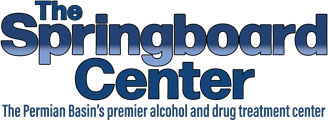Addiction doesn’t just affect the body — it impacts the mind, emotions, and spirit. Therapy plays a crucial role in healing, but with so many approaches available, it’s hard to know where to start!
Cognitive Behavioral Therapy (CBT), Dialectical Behavior Therapy (DBT), and Eye Movement Desensitization and Reprocessing (EMDR) each offer unique ways to address the complex nature of addiction.
CBT helps individuals reshape their thoughts and behaviors, offering a solid foundation for lasting recovery. DBT takes it further, equipping people with tools to manage intense emotions, a key factor in addiction struggles.
And EMDR targets the trauma that often fuels addiction, helping individuals heal from past wounds to build a better future.
Knowing how each works — and how they can work together — helps make that decision clearer, giving those in recovery the best chance to heal and thrive.
Related: TBI Recovery Stages: A Guide for Patients and Families
Understanding the Therapies: CBT vs DBT vs EMDR
CBT (Cognitive Behavioral Therapy)

Think of CBT as a way to understand how your thoughts affect your feelings and actions. It’s like having a toolbox to spot negative thoughts and replace them with better ones. Instead of letting bad thoughts control you, you learn to take charge and make healthier choices.
CBT works well because it gives you clear steps to follow. It’s like having a roadmap to help you stay on track and avoid falling back into old habits.
DBT (Dialectical Behavior Therapy)
DBT helps people who have trouble handling strong emotions. It teaches two important things: accepting yourself as you are AND learning how to make positive changes in your life.
You’ll learn useful skills like:
- Staying calm when upset
- Dealing with stress without turning to harmful behaviors
- Getting along better with others
- Being more aware of your thoughts and feelings
EMDR (Eye Movement Desensitization and Reprocessing)
EMDR helps people heal from difficult or scary memories that might be pushing them toward unhealthy behaviors. During EMDR, you follow a moving object with your eyes while thinking about past experiences. This helps your brain process old memories in a new, less painful way.
This therapy works especially well for people whose problems started after something scary or upsetting happened to them. It helps make those memories less powerful so they don’t control your life anymore.
Related: Inpatient vs Outpatient Rehab: Which Recovery Path Is Right for You?
Therapy Comparison: Benefits and Differences

CBT vs DBT vs EMDR: Key Differences
At first glance, CBT, DBT, and EMDR might seem similar, as they all address the emotional and psychological struggles tied to addiction. But each therapy has a distinct focus and methodology.
CBT targets the thought patterns that drive addictive behaviors. It’s about recognizing negative thoughts and replacing them with healthier alternatives, helping individuals challenge self-destructive thinking and make better choices.
This focus on thought reframing is ideal for those who want to address addiction through a more structured, cognitive approach.
DBT, on the other hand, is centered on emotional regulation. It’s particularly helpful for those who struggle with intense emotions and behaviors that seem out of control. While CBT might help you think differently, DBT gives you the tools to manage those overwhelming feelings that can lead to substance use.
The key difference is that DBT balances acceptance with change, encouraging individuals to understand their emotional responses while teaching them how to make healthier decisions.
EMDR is distinct from both CBT and DBT in that it specifically targets trauma. For many individuals, addiction is tied to past traumatic experiences, whether it’s abuse, loss, or other significant events. EMDR helps process these memories, reducing their emotional weight and allowing individuals to heal.
While CBT and DBT work on present behaviors and emotional states, EMDR takes a deeper dive into the past, helping individuals reprocess traumatic experiences that often drive addiction.
Which Therapy Is Best for Addiction Recovery?
The best therapy depends on an individual’s unique challenges.
For someone dealing with intense emotional reactions, DBT might be the most beneficial, as it focuses on managing and regulating emotions.
If trauma is the underlying cause of the addiction, EMDR could provide the relief needed to heal from past wounds.
For those who want to change their thinking patterns and address the cognitive aspects of addiction, CBT could be the right choice.
In many cases, a combination of therapies works best.
For example, CBT can be used to address addiction-related thoughts, while DBT helps with emotional regulation, and EMDR targets trauma. A tailored treatment plan that incorporates the strengths of each therapy can offer a more holistic approach, increasing the chances of long-term recovery.
Related: Can You Drink on Wellbutrin? What You Need to Know About Alcohol Interactions
The Role of Trauma in Addiction Recovery
The Link Between Trauma and Addiction
Trauma is often at the core of addiction, with many individuals turning to substances as a way to cope with overwhelming emotional pain. Whether from childhood abuse, a life-threatening event, or ongoing neglect, traumatic experiences can lead to deep emotional scars.
These unresolved emotions can drive individuals to use substances as a means of numbing the pain or escaping their reality.
In fact, research consistently shows that people with a history of trauma are more likely to struggle with addiction.
Trauma Therapy Types
Each therapy offers a different approach to addressing trauma, allowing for personalized treatment plans.
- CBT helps individuals reframe the negative thought patterns that often stem from traumatic experiences. It teaches strategies to cope with the emotions linked to trauma, such as guilt, shame, and fear, and works to replace those negative thoughts with healthier, more realistic ones.
- DBT offers skills for managing intense emotions, which can be triggered by trauma. It helps individuals accept their past experiences while teaching them how to respond to emotional distress without resorting to harmful behaviors, such as substance use.
- EMDR specifically targets the trauma itself. This therapy allows individuals to process and reframe traumatic memories, reducing their emotional impact and the urge to cope with substances. It’s particularly effective for those who have experienced significant trauma and are struggling with PTSD.
Healing Through Trauma-Informed Care: CBT vs DBT vs EMDR
Addiction recovery is a deeply personal journey, and finding the right therapeutic approach can make all the difference. Whether it’s the structured mindset shifts of CBT, the emotional regulation tools in DBT, or the trauma-focused healing offered by EMDR, each therapy brings unique strengths to the table.
What’s important is recognizing that healing from addiction often requires more than just addressing the substance use — it involves tackling the underlying emotional and psychological challenges that contribute to it.
If you’re ready to begin your recovery journey or explore the best therapy options for you, now is the time to take action.
The Springboard Center offers a personalized, compassionate approach to addiction treatment, integrating therapies like CBT, DBT, and EMDR into a holistic care plan.
Don’t wait to start healing. Reach out today to learn how our tailored treatment programs can help you or your loved one reclaim a life of freedom and fulfillment.
Take the first step towards a brighter future — contact The Springboard Center now to start your recovery journey!




